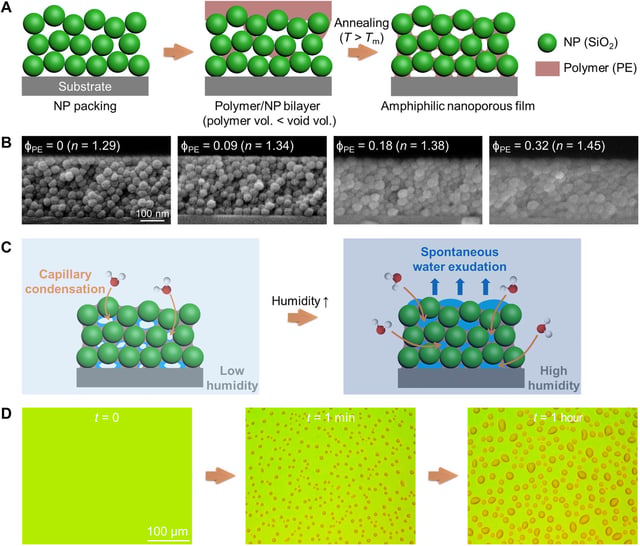Overview
- The material uses capillary condensation within amphiphilic nanopores to collect water vapor from the air, even in dry conditions.
- Water condenses inside the nanopores and emerges as stable droplets on the surface, defying conventional evaporation expectations.
- The discovery was initiated by an unexpected observation during unrelated experiments, leading to focused studies on hydrophilic/hydrophobic balance.
- Potential applications include passive water harvesting in arid regions and energy-efficient cooling systems for electronics and buildings.
- Current research efforts are focused on optimizing material composition, scaling fabrication, and improving droplet removal for practical deployment.

